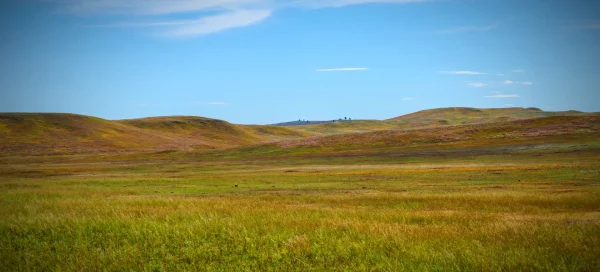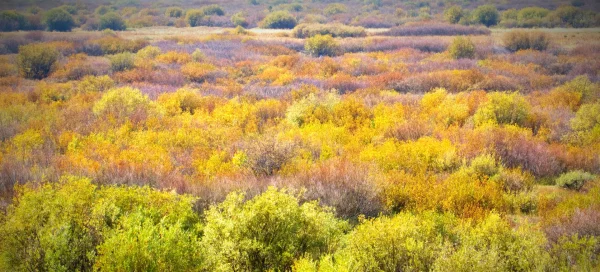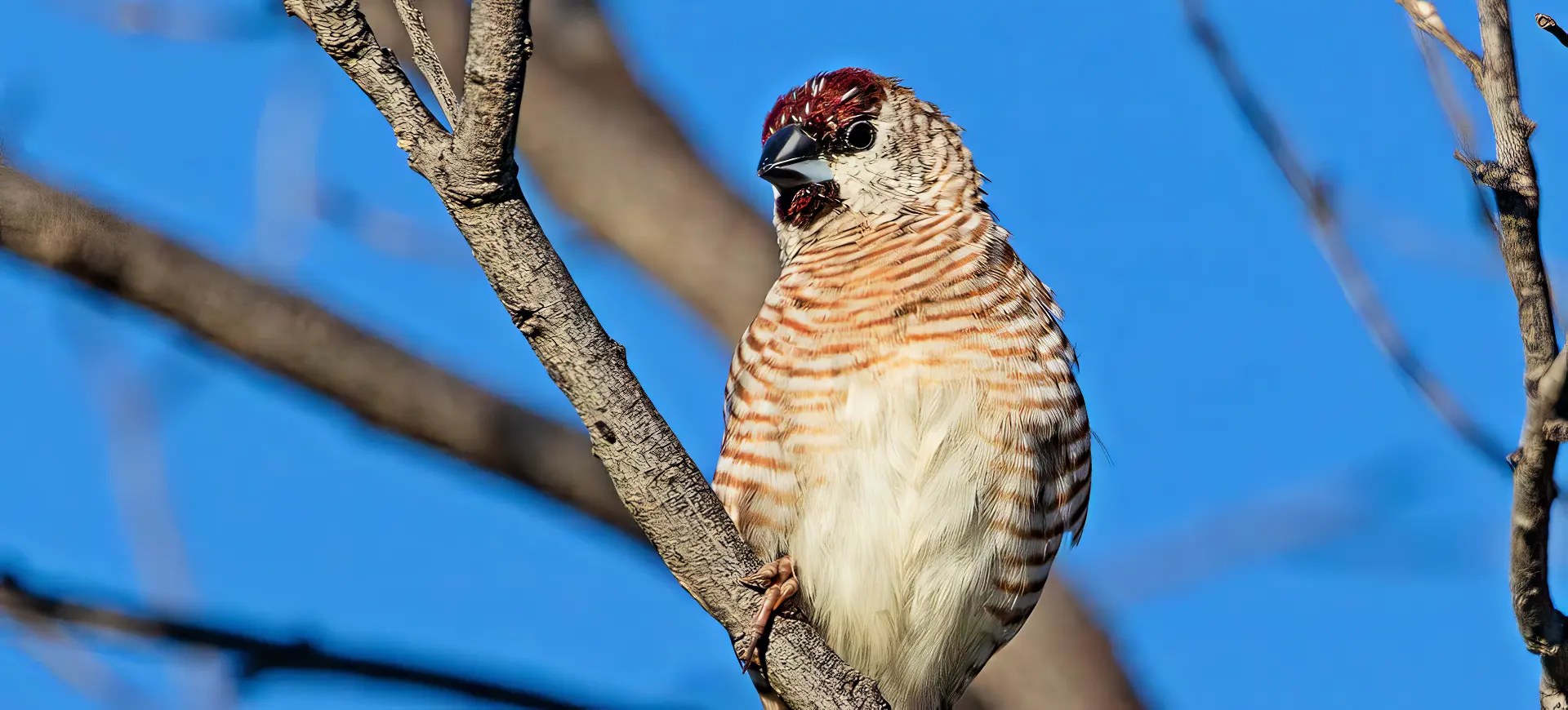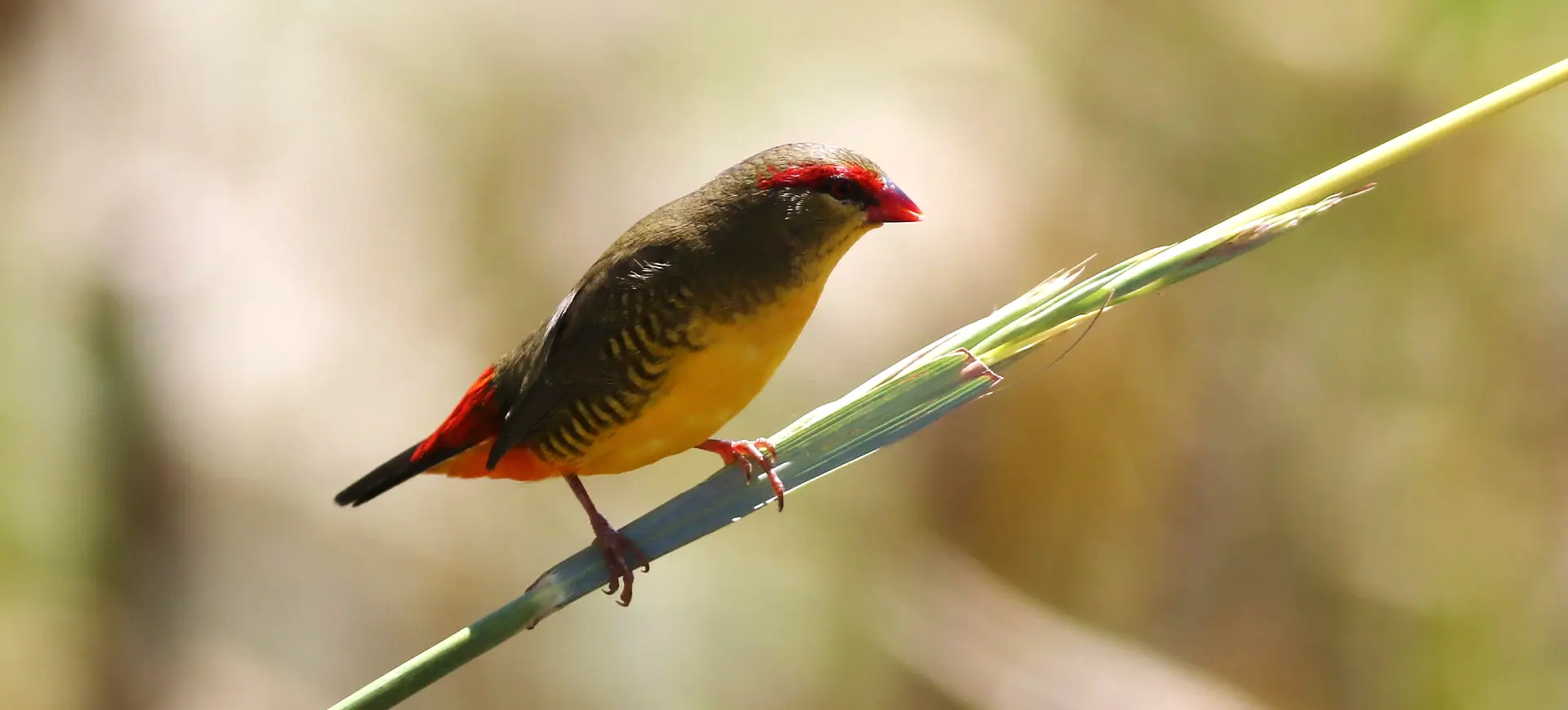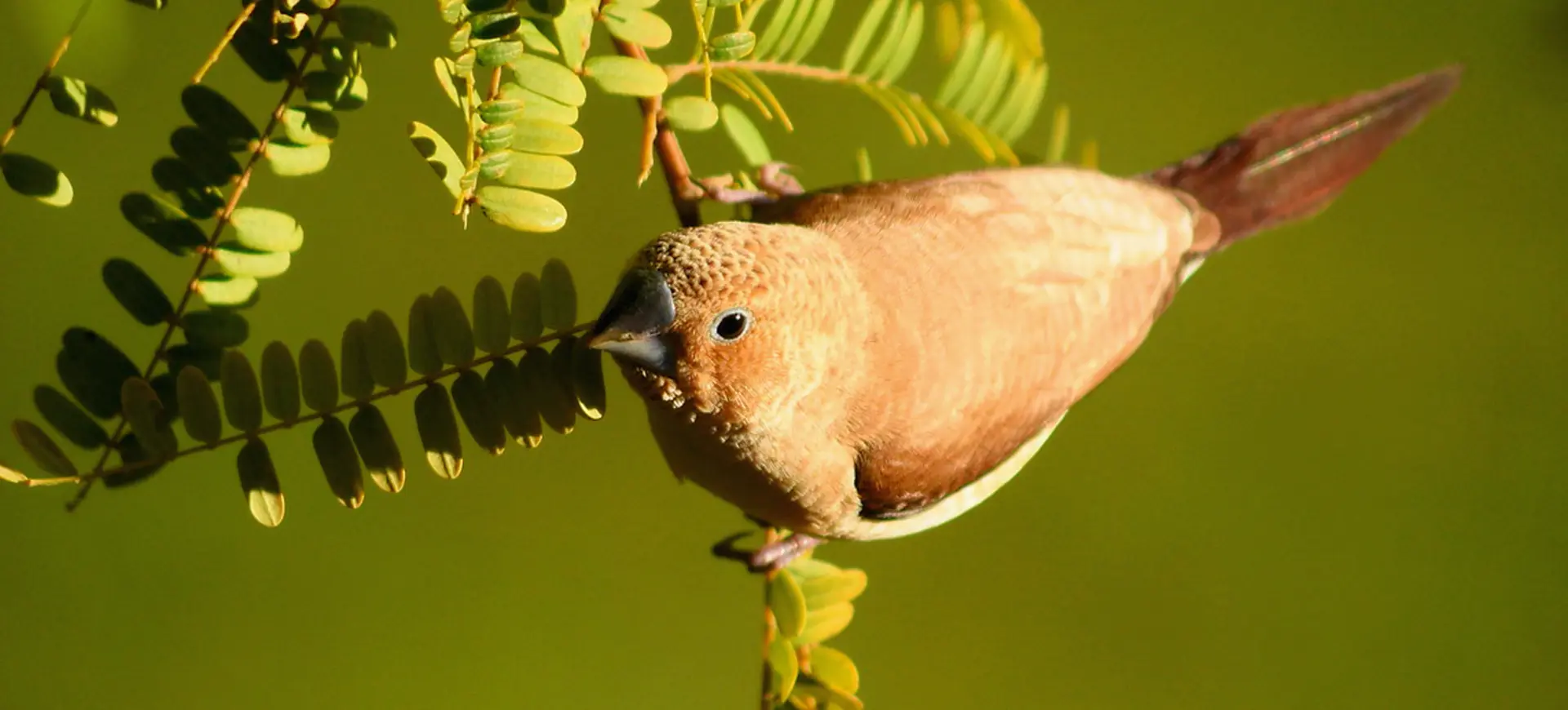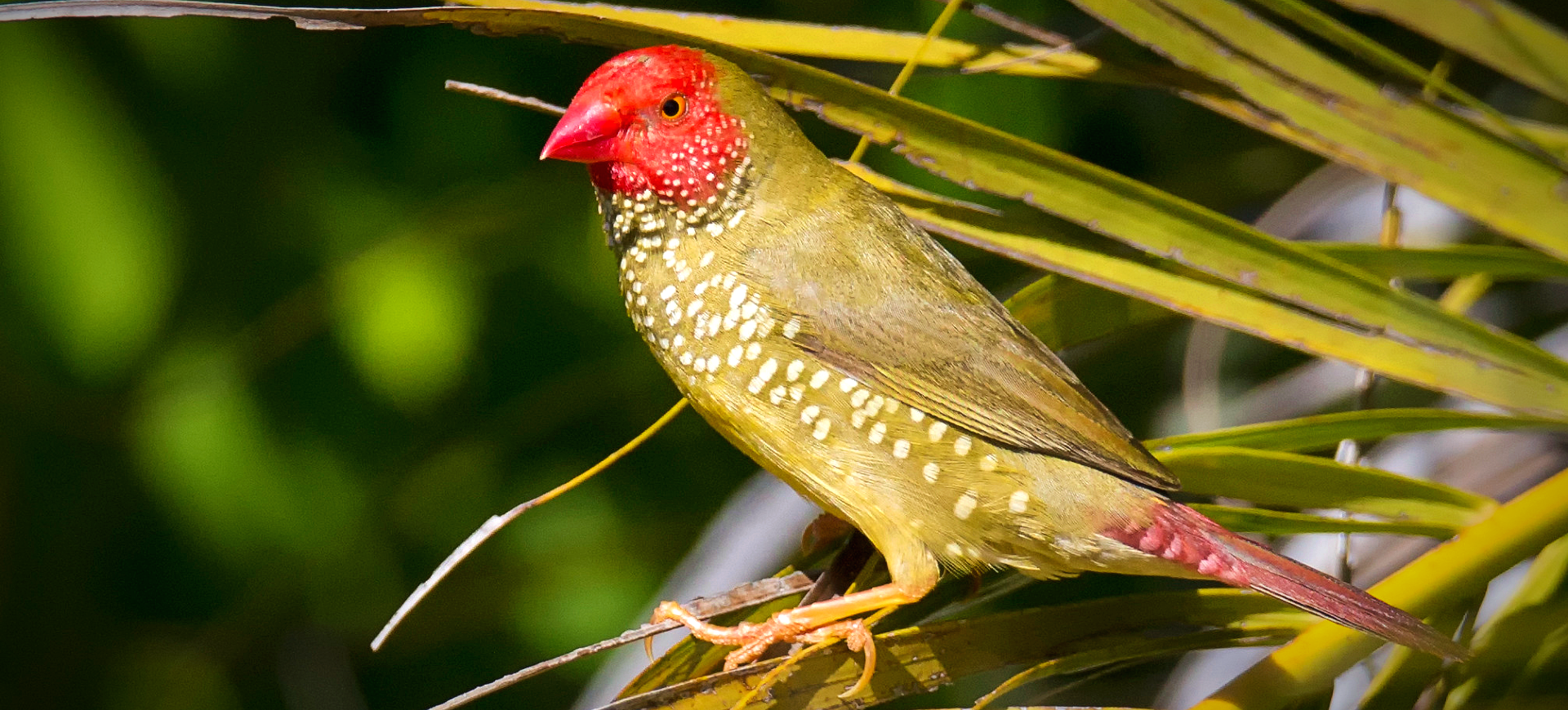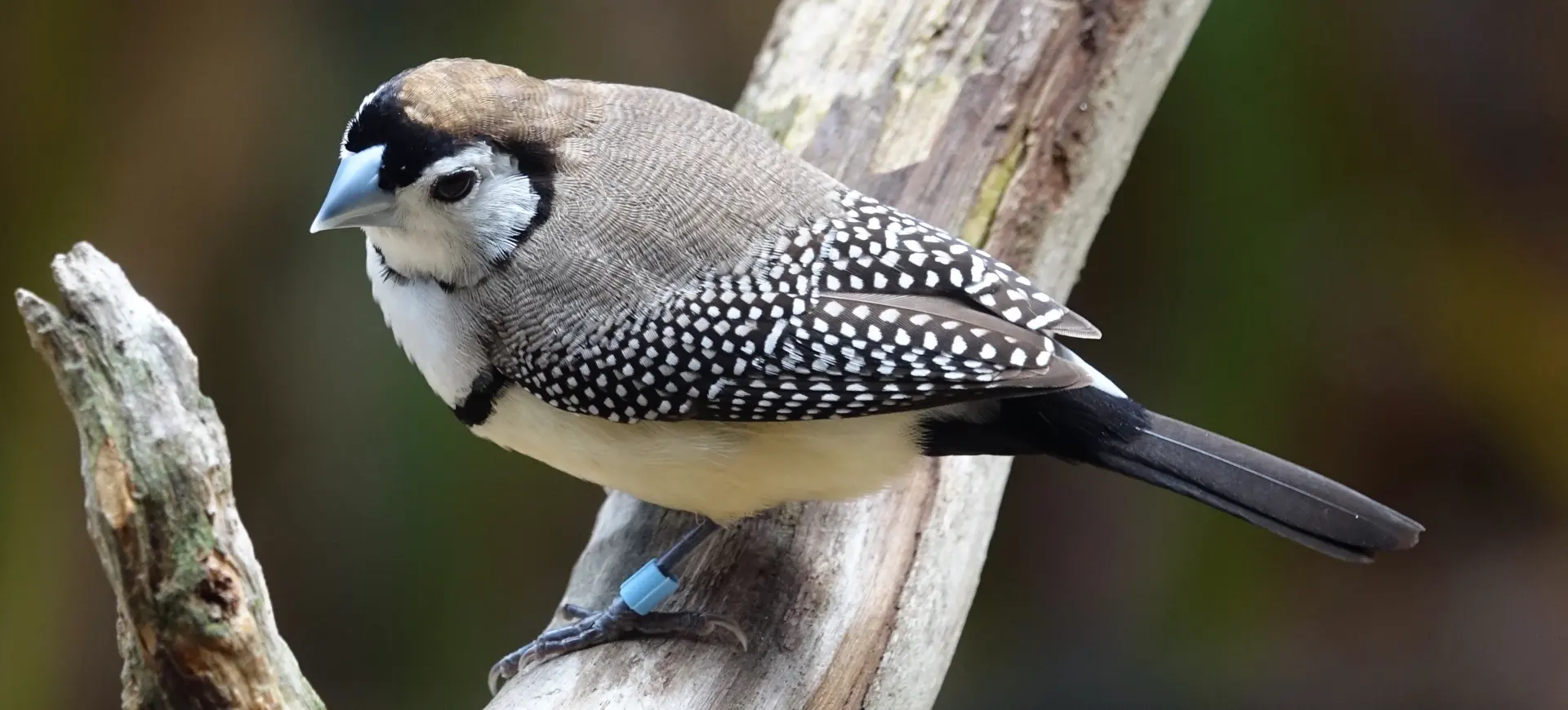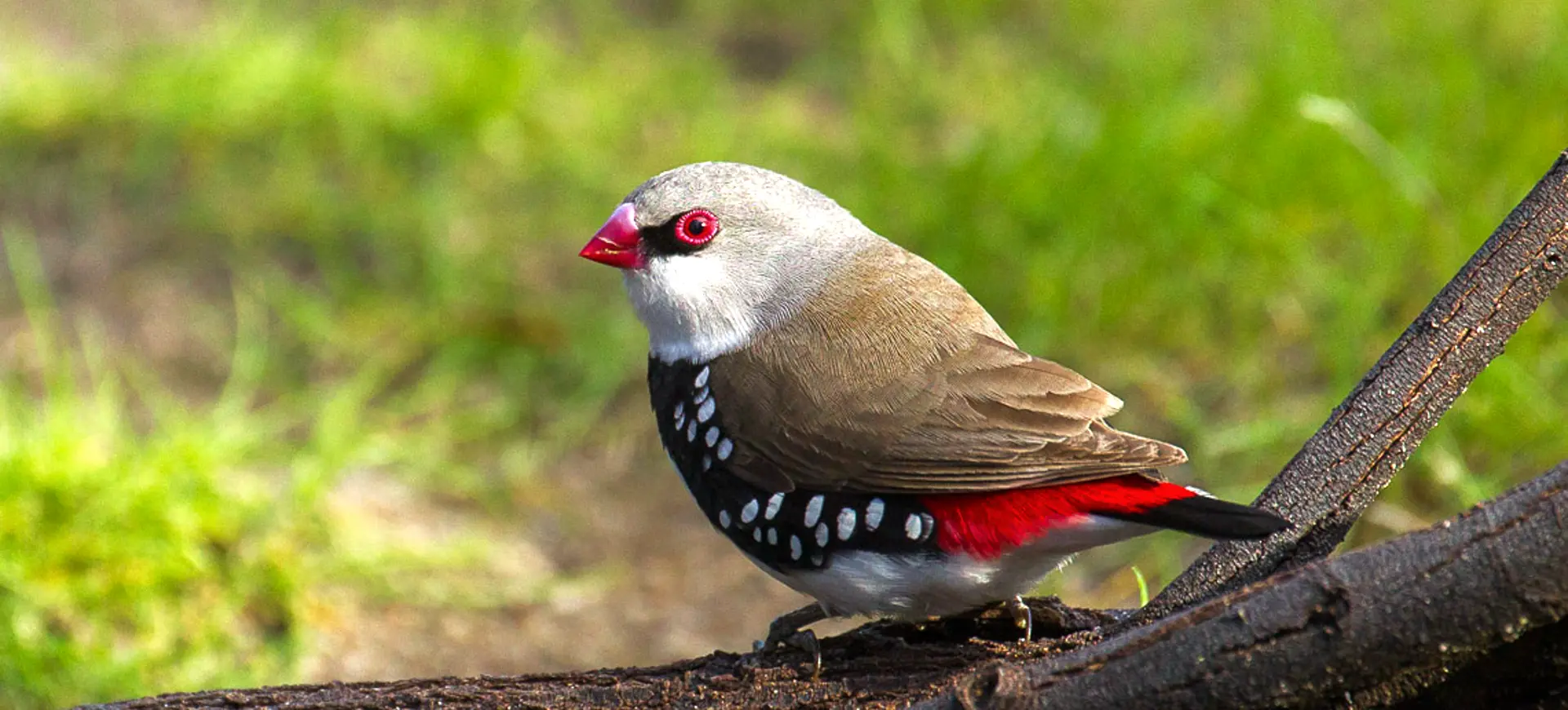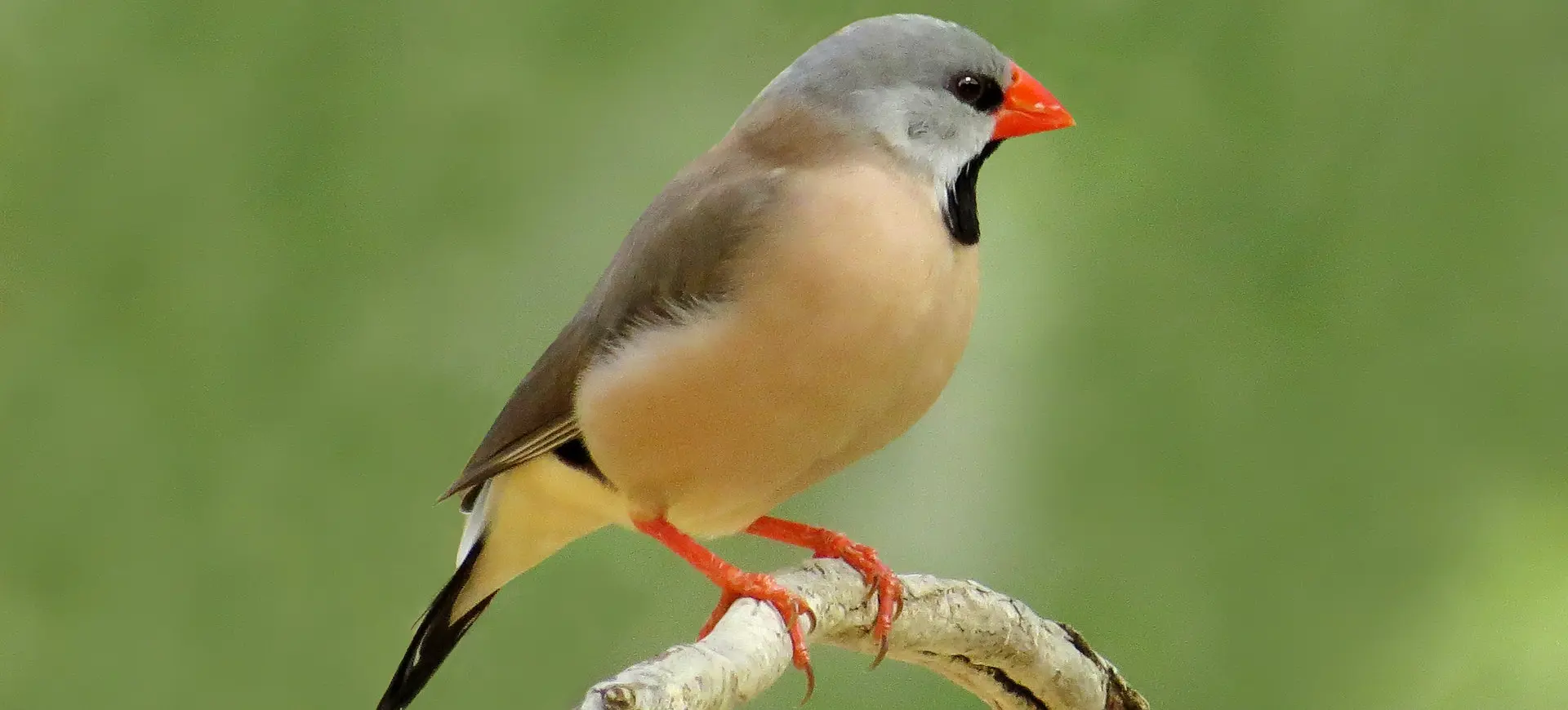Overview
The Gouldian Finch, Erythrura gouldiae, is a vibrant and colorful bird native to the tropical savannas of northern Australia. Known for its striking plumage, the Gouldian Finch displays various colors, including green, yellow, red, and black, making it a favorite among bird enthusiasts and one of the most visually captivating species in the avian world. These finches prefer habitats close to water sources, such as streams and rivers, where they can find grass seeds, their primary food source. The Gouldian Finch’s diet is supplemented with insects, particularly during the breeding season, to provide the necessary protein for their offspring.
Gouldian Finches are highly social birds, often found in small flocks when not breeding. They exhibit a complex social structure and communicate through chirps and calls. During the breeding season, their behavior changes significantly; they become more territorial and exhibit a variety of courtship displays. The conservation status of the Gouldian Finch is a concern, as their numbers have declined in the wild due to habitat loss, the pet trade, and diseases. Efforts are underway to protect their habitats and ensure the survival of this exquisite species.
Despite their challenges, Gouldian Finches have a strong presence in captivity, where their care requirements are well understood. They need a diet rich in seeds and insects, clean water and a spacious environment that simulates their natural habitat. Breeding in captivity has been successful, contributing to a better understanding their needs and behaviors. Conservationists are translating these successes into effective strategies for wild populations, aiming to restore the natural balance and ensure the Gouldian Finch remains a vibrant part of Australia’s birdlife.
Taxonomy
Kingdom
Phylum
Class
Order
Family
Genus
Species
Type
Physical Description:
Gouldian Finches are small, with a body length of about 5 to 6 inches, including their tail. They are renowned for their vibrant, multicolored plumage, which varies significantly among individuals. Depending on genetic variation, the most striking feature is their head, which can be red, black, or yellow. The rest of the body showcases a vivid green back, blue rump, and purple breast, with yellow belly feathers, creating a stunning visual display.
The sexes can be differentiated by subtle differences in color intensity, with males typically displaying brighter colors than females. Gouldian Finches also exhibit seasonal changes in plumage, with colors becoming more vibrant during the breeding season to attract mates. Juveniles have a more subdued coloration, lacking the vivid colors of adults, which they develop as they mature. Their short, stout beaks are perfectly adapted for cracking seeds, reflecting their granivorous diet.

Lifespan: Wild: ~5 years || Captivity: ~10 years

Weight: Male & Female: 0.4-0.5 oz (11-14 g)

Length: Male & Female: 5-6 inches (13-15 cm)

Wingspan: Male & Female: 5-6 inches (13-15 cm)

Top Speed: Unknown
Characteristic:
Native Habitat:
The Gouldian Finch is a bird species native to the tropical savannas of northern Australia. It prefers habitats that offer an abundance of grass seeds and access to water, such as grasslands, woodlands, and areas near streams and rivers. These environments provide the necessary resources for feeding and nesting, closely linked to the species’ dietary and breeding requirements.
The bird’s natural habitat is a wet-dry tropical climate, with a distinct rainy season influencing its breeding cycle and food availability. However, the fragmentation of these habitats due to agricultural expansion and fires has impacted the bird’s distribution. Therefore, it is crucial to conserve the bird’s natural environment to ensure its survival.
Climate Zones:
Biomes:
Biogeographical Realms:
Continents:
Countries:
Diet:
Diet & Feeding Habits:
Gouldian Finches primarily feed on seeds, constituting the bulk of their diet. Their feeding habits are adapted to the availability of these seeds, which varies seasonally in their natural habitat. During the breeding season, they supplement their diet with insects, providing the essential proteins required for the growth and development of their chicks.
In captivity, their diet must be carefully managed to mimic natural nutritional sources, including a mix of seeds and insect larvae. Access to fresh water is vital for their health, mirroring their natural preference for habitats near water sources. Their feeding behavior is a social activity, often done in groups, highlighting the importance of social interactions in their daily life.
Mating Behavior:
Mating Description:
Gouldian Finches are monogamous, forming pair bonds that last through the breeding season. Elaborate displays characterize their courtship, including dances, calls, and the presentation of nesting materials by the male to the female. These behaviors strengthen pair bonds and serve as a mechanism for mate selection, with females often choosing males based on the quality of their displays and the compatibility of their head color.
Breeding typically occurs during the early part of the wet season when food resources are most abundant. The female lays between 4 and 8 eggs per clutch, which both parents incubate. The chicks are altricial, requiring extensive care and feeding by both parents until ready to fledge. The social nature of Gouldian Finches extends to their breeding behavior, with pairs often nesting near one another, forming loose colonies.
Reproduction Season:
Birth Type:
Pregnancy Duration:
Female Name:
Male Name:
Baby Name:
Social Structure Description:
Gouldian Finches exhibit a complex social structure, characterized by their tendency to form flocks outside the breeding season. These flocks protect from predators and increase the efficiency of finding food. However, During the breeding season, they become more territorial and may nest near loose colonies. This social behavior facilitates communication and mating, with birds often engaging in communal activities such as feeding and preening.
The strength of the pair bond is evident in their breeding behavior, with pairs working together to construct nests, incubate eggs, and rear their offspring. This cooperation extends to the care of the chicks, with both parents involved in feeding and protecting them until they are independent. The social interactions among Gouldian Finches are key to their behavior, influencing their survival and reproductive success.
Groups:
Conservation Status:
Population Trend:
The Gouldian Finch is classified as Near Threatened by the IUCN, with a decreasing population trend. This classification reflects the challenges they face in the wild, including habitat loss, the effects of inappropriate fire regimes, and the illegal pet trade. While their exact numbers in the wild are difficult to determine, it is known that their populations are fragmented and vulnerable to further decline.
Conservation efforts are focused on protecting their habitats, regulating the pet trade, and understanding the ecological requirements of this species to facilitate their recovery. Research and monitoring are crucial to gaining insights into their population dynamics, breeding success, and habitat use and informing conservation strategies to stabilize and increase their wild populations.
Population Threats:
The primary threats to Gouldian Finches include habitat destruction due to agricultural expansion, inappropriate fire management that alters their natural environment, and the capture of wild birds for the pet trade. These factors have contributed to the fragmentation of their populations and a decrease in available food and nesting sites. Disease outbreaks, particularly those affecting juveniles, also pose a significant risk to their survival.
Addressing these threats requires a multifaceted approach that includes habitat conservation, implementing controlled fire regimes to maintain their natural habitat, and strict regulations on the pet trade. Public awareness and education about the Gouldian Finch’s plight are also essential to garnering support for conservation efforts.
Conservation Efforts:
Conservation efforts for the Gouldian Finch include habitat protection, research into their breeding and feeding habits, and the rehabilitation of degraded areas to improve the availability of food and nesting sites. Programs to educate the public and landowners about fire management and habitat conservation are critical to these efforts. Additionally, captive breeding programs play a role in increasing population numbers and can serve as a genetic reservoir for future reintroduction projects.
Collaboration between conservation organizations, government agencies, and local communities is essential to the success of these efforts. By combining habitat conservation with research and monitoring, it is possible to develop effective strategies to ensure the long-term survival of the Gouldian Finch in the wild.
Additional Resources:
Fun Facts
- Gouldian Finches are known for their head color variation, which is genetically determined, with red, black, and yellow as possible colors.
- They are called ‘Rainbow Finches’ due to their vibrant and varied plumage.
- Gouldian Finches drink by sucking water, unlike many birds that scoop it up with their beaks.
- They have a unique way of sleeping; they tuck their heads under the feathers of their wings.
- In the wild, Gouldian Finches rarely breed in their first year of life, usually waiting until they are fully mature.
- Their nests are often constructed in tree hollows or abandoned nests of other birds.
- Gouldian Finches can change their social structure seasonally, from forming flocks to pairing up during the breeding season.
- They are highly sensitive to environmental changes, affecting their breeding success and survival.
- Captive breeding has led to the development of various color mutations, although these are not found in wild populations.
- Conservation efforts for Gouldian Finches also benefit other species that share their habitat, highlighting the importance of ecosystem-wide conservation strategies.



